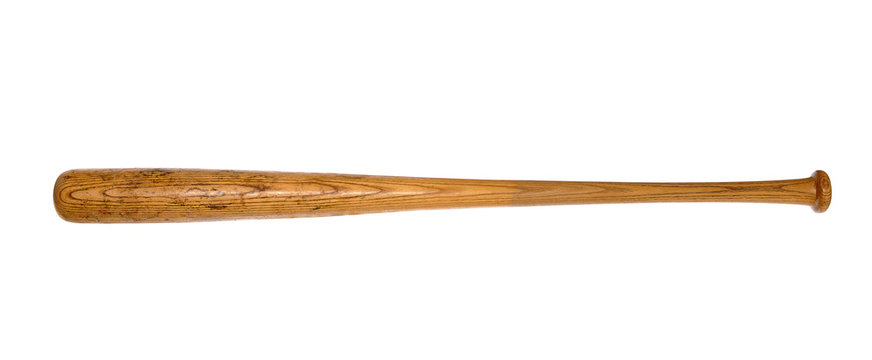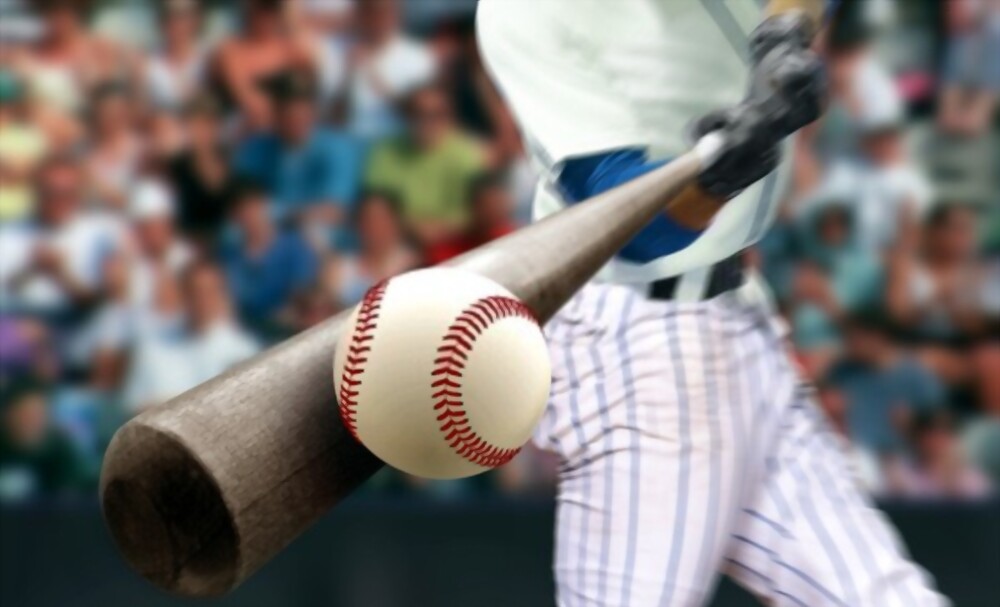Baseball bats come in a variety of sizes and dimensions to suit players of all ages and skill levels. The length and weight of a bat can greatly affect a player’s performance on the field. Understanding the different dimensions and how they relate to a player’s build and skill level is essential for selecting the right bat.
Baseball bats that conform to the regulations set by Major League Baseball (MLB) are typically 42 inches in length and feature a diameter of 2.61 inches at the widest point. This means baseball bat shouldn’t be longer than 42 inches. This size requirement is consistent across all levels of play which adhere to MLB rules.
In this guide, I will explore the various dimensions of baseball bats and how they can impact a player’s game.
Standard Dimensions of Baseball Bat

The requirements for baseball bats differ based on the league. Different leagues have different specifications for their bats, such as length, weight, and material composition.
Baseball bats that conform to the regulations set by Major League Baseball (MLB) are typically 42 inches in length and feature a diameter of 2.61 inches at the widest point. This means baseball bat shouldn’t be longer than 42 inches. This size requirement is consistent across all levels of play which adhere to MLB rules.
Little League (Major) Division and below
The maximum length of a baseball bat is 33 inches, and its diameter must not exceed 2⅝ inches. For wooden bats, the minimum diameter must be 15/16 inches, and for bats under 30 inches, the minimum diameter must be 7/8 inches. Wood bats must not exceed sixteen (16) inches from the small end when fitted with a sleeve or taped.
Intermediate (50/70) Division and Junior League
Baseball bats must not exceed 34 inches in length or 2⅝ inches in diameter. For wooden bats, the smallest part must be at least fifteen-sixteenths (15/16) inches in diameter, or 7/8 inches for bats shorter than 30 inches. Wood bats must not exceed a length of eighteen (18) inches from the small end and should be taped or fitted with a sleeve.
Senior League:
The maximum length of a bat is 36 inches, while the maximum diameter of a bat is 2-5/8 inches. The diameter of bats made of wood must not be less than 15/16 inches and 7/8 inches for those shorter than 30 inches. The length of the bat must not differ from its weight by more than three ounces. For example, a baseball bat that measures 33 inches in length must have a minimum weight of 30 ounces.
Important Note: BBCOR bats do not need to feature the USA Baseball logo in order to meet certification standards.
Weight of Baseball Bat
In Major League Baseball, there is no restriction on the weight of a baseball bat as long as it adheres to the allowed dimensions and regulations. Players have the freedom to choose a bat that fits their preferences and playing style, as long as it meets the rules and guidelines set by the league.
However, players in the MLB typically prefer bats that are between 30 and 34 ounces. This is because a bat that is too light can be less powerful, and a bat that is too heavy can be harder to control.
It’s essential for players to understand and comply with the rules and regulations of the league they are playing in before purchasing a bat.
Materials Used in Baseball Bats
Baseball bats are typically made from one of three materials: wood, aluminum, or composite. Each material has its own unique characteristics that can affect the bat’s performance and durability.
Wood bats: Wood bats are the most traditional type of baseball bat and are typically made from ash or maple. These bats offer a natural feel and a traditional look, but they are also more prone to breaking and are not as durable as aluminum or composite bats.
Aluminum bats: Aluminum bats are made from a lightweight alloy and are designed to be more durable and long-lasting than wood bats. These bats also offer a larger sweet spot and are generally more affordable than composite bats. However, they also tend to have a “ping” sound when they hit the ball and they can be less comfortable to hold compared to wood and composite.
Composite bats: Composite bats are made from a combination of materials, such as carbon fiber, glass fiber, and graphite. These bats are designed to be lightweight and durable and offer a larger sweet spot than wood or aluminum bats. They also tend to have less “ping” sound when hitting the ball and have a more comfortable grip. Composite bats are generally the most expensive option.
It’s important to note that most youth baseball leagues only allow the use of composite and aluminum bats, while most professional leagues only allow the use of wooden bats. It’s essential to check with the league you’re playing in before purchasing a bat to ensure that it is legal to use.
A Brief Anatomy of The Baseball Bat

The anatomy of a baseball bat can be broken down into several parts:
- Handle: The handle is the part of the bat that is gripped by the player’s hands. It is usually made of wood, composite, or synthetic materials and is designed to provide a comfortable and secure grip.
- Knob: The knob is the bottom end of the handle. It is designed to provide a secure grip and prevent the bat from slipping out of the player’s hands.
- Barrel: It is the widest part of the bat and is designed to make contact with the ball. The size of the barrel affects the sweet spot and the power of the bat.
- Taper: The transition between the barrel and the handle of the bat is called a taper. It provides a smooth transition between the two parts, allowing for a comfortable grip and a balanced swing.
- End Cap: The end cap is a small, usually plastic or composite piece that is placed at the end of the barrel. It adds strength and durability to the bat and also can help to increase the trampoline effect of the barrel, making the ball go further.
- Lizard skin or rubber grip: Many baseball bats come with a rubber or lizard skin grip attached to the handle of the bat. These grips are designed to provide a comfortable and non-slip grip, and also, can help to absorb vibrations from the bat.
How to Choose the Right Baseball Bat?
Choosing the right baseball bat can greatly affect a player’s performance on the field. Here are a few key factors to consider when selecting a baseball bat:
Length:
The length of a baseball bat is measured from the knob of the handle to the end of the barrel. The length of the bat should be proportionate to the player’s height and weight. A player who is taller and heavier will typically require a longer bat, while a shorter and lighter player will require a shorter bat.
Weight:
The baseball bat weight is measured in ounces and is typically listed on the bat or in the product description. It should be proportionate to the player’s strength and skill level. A player who is stronger and more experienced may prefer a heavier bat, while a player who is weaker or less experienced may prefer a lighter bat.
Barrel size:
It’s in inches and is the widest part of the bat. A larger barrel size will result in a larger sweet spot and more power, while a smaller barrel size will result in more control.
Material:
Baseball bats are typically made from one of three materials: wood, aluminum, or composite. Each material has its own unique characteristics that can affect the bat’s performance and durability. It’s important to understand the different materials and construction techniques before selecting a bat.
League regulations:
It’s essential to check with the league you’re playing in before purchasing a bat to ensure that it is legal to use. Each league has its own regulations on bat size and weight, so it’s important to comply with these regulations.
Comfort:
Lastly, it’s important to choose a bat that feels comfortable in your hands, and a grip you feel comfortable with. It’s important to test the bat by swinging it a few times to get a sense of how it feels and how it performs.
Ultimately, the right baseball bat for you will depend on your personal preferences and playing style. It’s important to try out different options and find the one that feels and performs the best for you.
FAQs
How do you size a baseball bat?
To size a baseball bat, you need to consider the player’s height, weight, and personal preference. A general rule of thumb is to choose a bat that is comfortable to swing and allows for good control and bat speed.
How many cm is a baseball bat?
The length of a baseball bat is typically measured in inches. The most common sizes for adult players range from 32 to 34 inches, although other lengths are available for different age groups and leagues.
To convert the length of a baseball bat from inches to centimeters, you can multiply the length in inches by 2.54. For example, a 32-inch bat would be approximately 81.28 centimeters long.
How many feet long is a baseball bat?
To convert the length of a baseball bat from inches to feet, you can divide the length by inches by 12. For example, a 32-inch bat would be approximately 2.67 feet long.
How many meters is a baseball bat?
To convert the length of a baseball bat from inches to meters, you can multiply the length in inches by 0.0254. For example, a 32-inch bat would be approximately 0.8128 meters long.